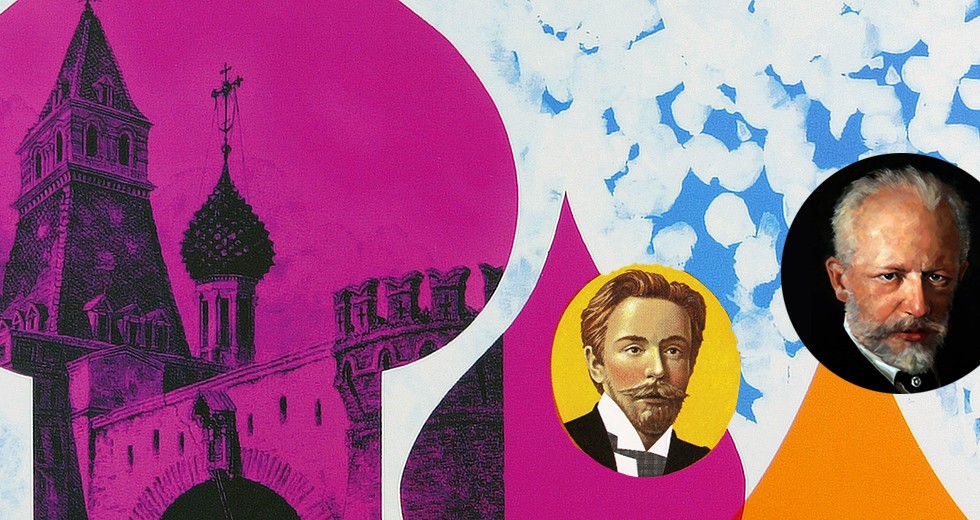
It’s hard to imagine a composer whose early style is as dramatic a departure from his late style as Alexander Scriabin. His Nocturne in A-Flat Major (1884) for example, is Chopinesque; a delightfully languid reverie, a beautifully crafted work of melodic grace. In his early days, he quite clearly is drawing from Romantic models, placing himself firmly in a world of lyricism and sentimentality.
So at least at one point in time, he and Tchaikovsky had something in common besides their nationality. Also in common, the Chicago Symphony Orchestra, under Riccardo Muti, is undertaking a season-long overview of the two, with the CSO music director leading nine programs of music by the composers in 2014/15.
Today, when we think of the two composers, the points of intersection are sparse indeed. The works that continue to establish Tchaikovsky as a master — that sustain his firmly ensconced placement in the canon — show him to be a melodist without equal, a “popular” composer who doesn’t pander, someone capable of building thrill rides (the violin concerto, the piano concerto) as well as the most delicate and fragile of sculptures (pick your favorite — Dance of the Mirlitons?).
The works that place Scriabin in his respected but unjustly neglected alcove? Astringent, eerie, yet revelatory pieces like the Piano Sonata No. 5; the gargantuan, crazed brilliance of The Poem of Ecstasy, or the dizzying, haunting majesty of Prometheus: The Poem of Fire. More so, his pioneering use of dissonance, a musical thread developed quite apart from the second Viennese school.
The Chicago Symphony Orchestra’s season-long survey of Scriabin, under Riccardo Muti, begins Jan. 22.
So, Tchaikovsky and Scriabin: the Great Romantic and the Great Mystic. From their early common roots, how then did the branches so dramatically deviate?
Scriabin’s search for a compositional voice distinct from his early models moves in tandem with his search for spiritual clarity. While it would be a highly dubious enterprise to try and draw a straight line leading from his fascination with the occult to the skeptical eye he cast on tonality, certainly his theosophical leanings contributed to his disregard for convention, musical and otherwise. As a mental exercise to see just how far Scriabin ventured into the ether, try to imagine Tchaikovsky writing works titled Black Mass or Satanic Poem.
To attribute Scriabin’s innovation solely to his mystical explorations would shortchange his phenomenal creativity, though. Plenty of people have found themselves under the sway of one esoteric tradition or another. Unlike other intrepid searchers, Scriabin had the genius, training and discipline to translate his internal life into the highest art, forging a highly influential style that distinguishes him as one of our most innovative (if not beloved) composers. “No one was more famous during their lifetime,” said the composer’s biographer, adding “few were more quickly ignored after death.”
Ignored, that is, by all but other composers. The father does the work, while the sons (Stravinsky, Prokofiev) enjoy the spoils.
Scriabin passed away at age 43 (another composer gone too soon. Et sic semper erit). His final works were fragments of what was to be a massive piece called Mysterium, designed as a week-long composition to be played at the foothills of the Himalayas, incorporating the senses of sight, sound, smell and touch. He fully expected, after the work’s premiere performance, that the world would end, everything would dissolve into bliss, and the human race would be replaced by “nobler beings.”
“There will not be a single spectator,” he wrote. “All will be participants. The work requires special people, special artists and a completely new culture. The cast of performers includes an orchestra, a large mixed choir, an instrument with visual effects, dancers, a procession, incense, and rhythmic textural articulation. The cathedral in which it will take place will not be of one single type of stone but will continually change with the atmosphere and motion of the Mysterium. This will be done with the aid of mists and lights, which will modify the architectural contours.”
You can’t say he didn’t aim high.
Tchaikovsky’s musical development is, by comparison, almost conventional. At the risk of oversimplification, his greatness lies in the synthesis of a distinctively Russian vocabulary with a resolutely Western technique. The efforts he made in his work were not directed to innovation as much as to refinement, to unifying the native with the imported elements of Russian culture. He did so to unparalleled success. While his internal life was famously chaotic and tormented, as with Mozart, it is problematic to search for direct links between emotional upheavals and the work he was creating.
Regarding his disastrous marriage, Tchaikovsky wrote (referring to himself): “That man who in May took it into his head to marry Antonina Ivanovna … during June wrote a whole opera as though nothing had happened.” Not so with Scriabin, whose inner world informed all he put to paper.
As bookends, they contain an encyclopedic overview of their native country, pointing toward history but also the future. Simple folk songs and Orthodox hymns at one end, apocalyptic chaos at the other, in the middle the ballets, operas and waltzes that continue to inspire and enchant the world over.
Peter Lefevre, based in California, writes about music for the Orange County Register and Opera News.